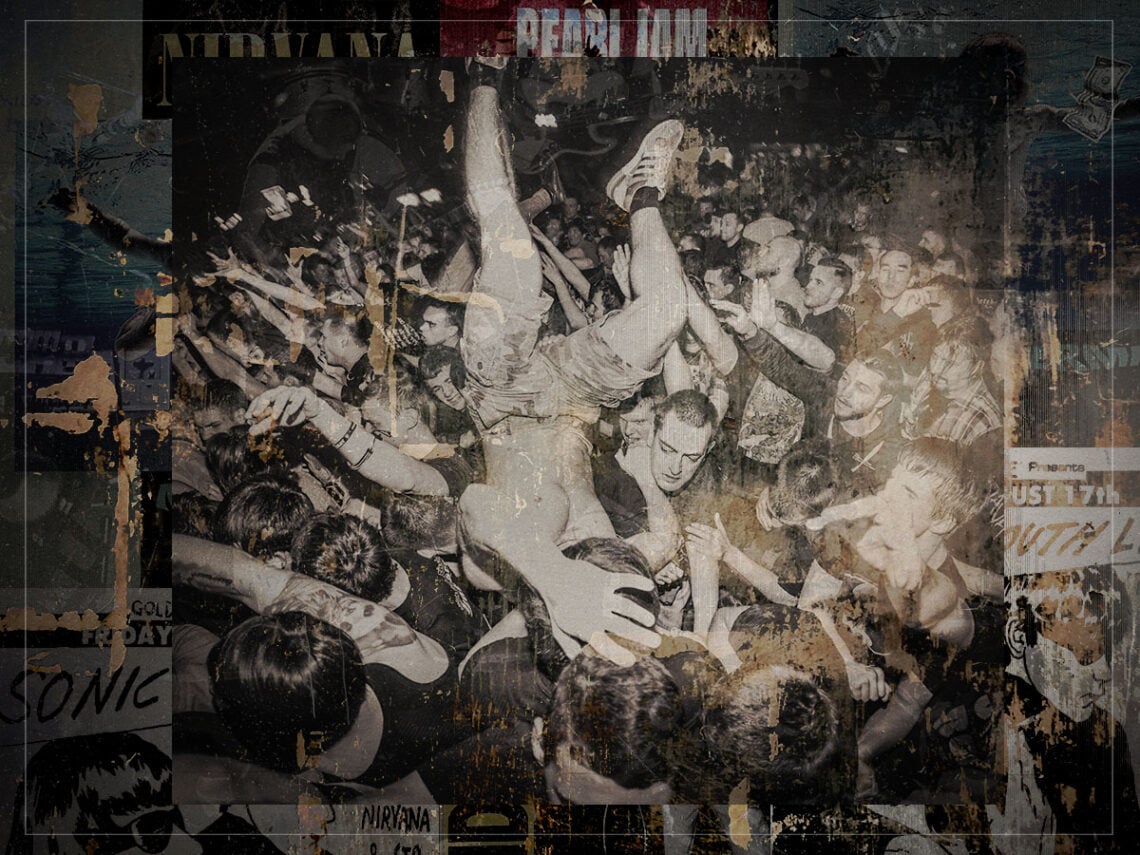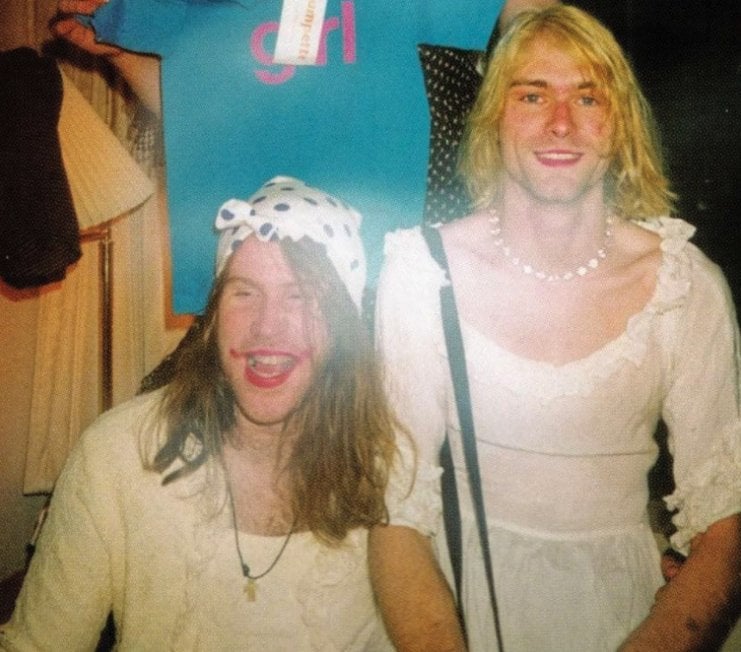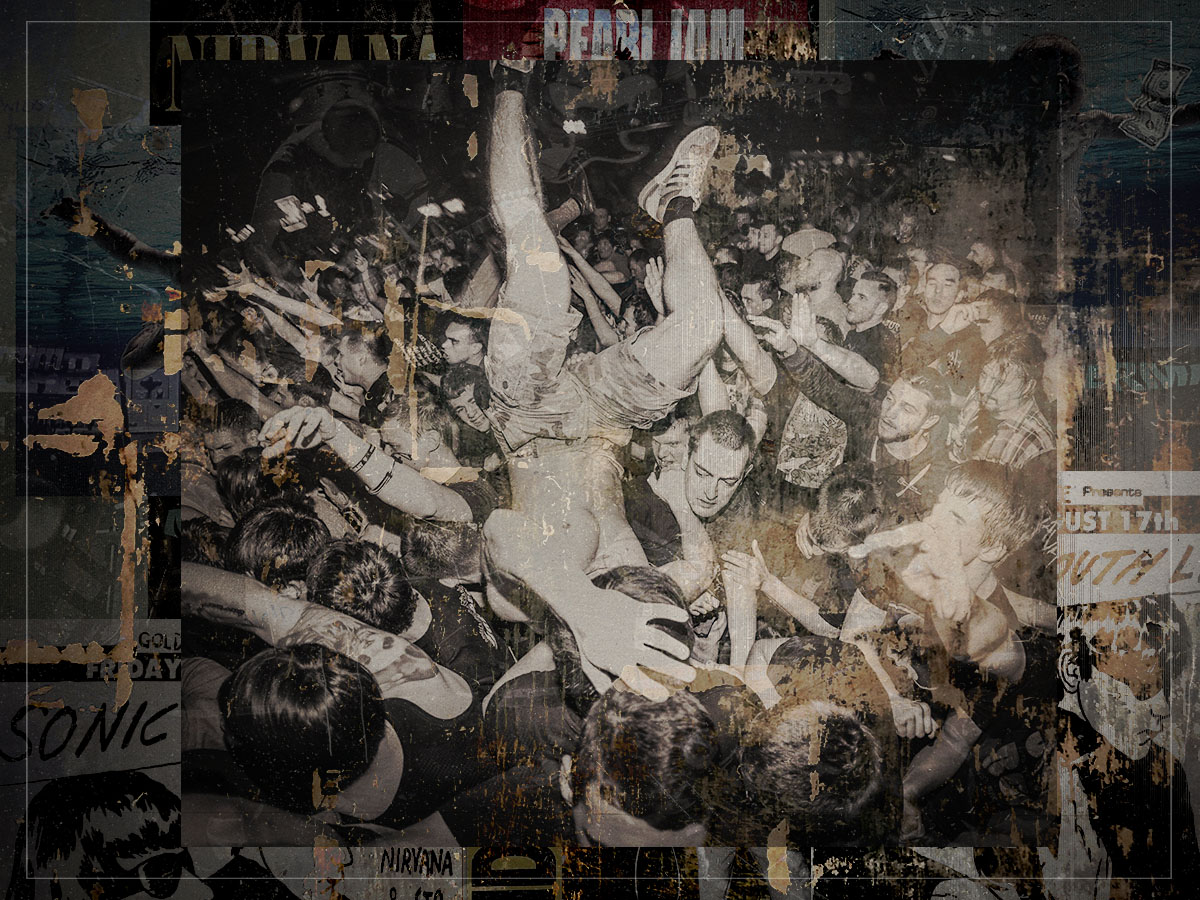
(Credits: Far Out / Evgeniy Smersh / Original Promo)
Sat 25 October 2025 17:30, UK
All the best music scenes in history have been built on a crucial mix of camaraderie and competition. Grunge was no different.
Neither was the British Invasion, the GGBG scene, or punk in the UK. As Hugh Cornwell revealed to me in a recent interview, slagging someone off was par for the course in a bid to get coverage in the papers, but beyond that tactic was, by and large, a great deal of respect.
So, while Kurt Cobain might have quipped, “We’ve never had a fight, I’ve just always hated his band,” in regards to Eddie Vedder and Pearl Jam, for the most part, he was perfectly complimentary of his peers. However, one stood out about the others: Mark Lanegan.
The late Screaming Trees frontman was a revered presence on the scene. He was the strange sort of literary brawler who would knock somebody out by smashing their face into a copy of War and Peace. Yet, while you wouldn’t want to cross him in a dark library, he had nothing but kindness and mentorship for a young Cobain.
All the same, the Nivana singer was still a tad “intimidated” by him, and that disposition may well have curtailed what could have been one of the coolest genre collisions in musical history. You see, beyond rainy realism and a punk attack on the synthy mainstream of the 1980s, the Seattle onslaught of grunge was rooted in the blues.
From its simple verse-chorus structure to its humble way of honouring the times with careworn authenticity, the blues echoed throughout what followed on the West Coast. Much of that had to do with Lanegan’s stewardship. The singer, who could slice through a baguette with his daggered beard, adored the deep sound of the Mississippi Delta.
 Mark Lanegan and Isobel Campbell in 2006. (Credits: Far Out / V2)
Mark Lanegan and Isobel Campbell in 2006. (Credits: Far Out / V2)
Others followed in his wake, setting up a small clutch of plaid-shirted collectors, and potentially a supergroup. As Screaming Trees guitarist Mark Pickerel writes in Grunge is Dead by Greg Prato, “Lanegan and I had become big fans of Lead Belly. And several other blues artists – Lightnin’ Hopkins, Robert Johnson. I know that Kurt was a big fan of Lanegan’s – they traded a lot of tapes and had conversations about different artists they liked.”
In time, Cobain would even cite Lead Belly’s Last Sessions among his 11 favourite albums of all time, as the blues infused Nirvana’s output with a gripping sense of sparsity and grit. But in 1989, both Cobain and Lanegan were keen to start a band that more openly displayed the influence.
“At some point, Mark approached me about playing drums for a project that he and Kurt wanted to start, which would really focus on blues,” Pickerel continues, ”particularly Lead Belly’s catalog. I believe we were also talking about playing songs by all the great bluesmen. I got really excited about it, and was envisioning this super group that was bound for success – sort of be the modern day, Northwest version of Cream.”
The band would feature Cobain and Lanegan as reimagined blues frontmen, Krist Novoselic and Pickerel rounding out the rhythm section, and Jack Endino brought in as a producer. Even now, the proposition proves so tantalising you half feel like sending Janelle Monáe back in time just to be able to evoke a sense of what grunge meets the blues might have sounded like. Beyond the mystery of the amalgamation of musical styles, there’s also the puzzle of how the disparate frontmen would’ve aligned.
As even Pickerel mused, “It was funny, because having been in a band with Mark for so long, his personality in the Screaming Trees was he couldn’t help but really be the bandleader. He just is a natural leader, is very outspoken, and can be very aggressive.” He toned that down while in the presence of Cobain – a peer he greatly respected.
 Nirvana’s Kurt Cobain with Mark Lanegan. (Credit: Kurt Cobain Memorial Foundation)
Nirvana’s Kurt Cobain with Mark Lanegan. (Credit: Kurt Cobain Memorial Foundation)
In fact, he respected him so much that he even went out of his way to try and protect him and help launch his career after witnessing Nirvana play live for the first time. ”I walked back to my depressing hovel with an electricity in my step and a newfound buoyancy of spirit.” Lanegan wrote about the rarified concert. “I had just experienced something touched by greatness.”
He would also recall, “I knew him for a long time before he was a superstar. I considered him a cherished little brother.” He cared for him like a little brother, too. But on the day that Cobain committed suicide, Lanegan missed a call from him a few hours earlier. ”That’s a guilt I’ll always have,” he said in his memoir.
A few years earlier, that caring side was self-apparent during the fabled blues sessions. “The couple of rehearsals we had, I saw a different side of Mark,” Pickerel says, “one that was much quieter. He seemed to have a great deal of respect for Kurt and Krist. At the same time, Kurt seemed intimidated by Lanegan’s talents and vision.”
Sadly, that vision never came to fruition, waylaid by interference from the industry. “This was right around the Screaming Trees being courted by Epic, and Nirvana was getting ready to leave for a big tour,” Pickerel bemoans. “We just didn’t have the time to make this thing evolve into something bigger, or into more recordings.”
A name hadn’t even been decided on with Cobain suggesting Lithium (if you listen to the Nirvana song of the same name now you’ll notice the covert blues feel), but Jury was also being bandied around. Now, all that survives of this great musical ‘what could have been’ is ‘Where Did You Sleep Last Night?’ from Lanegan’s solo record.
That is, of course, unless you count how formative the brief sessions proved for the music that followed from Seattle’s two most enigmatic titans.
Related Topics

